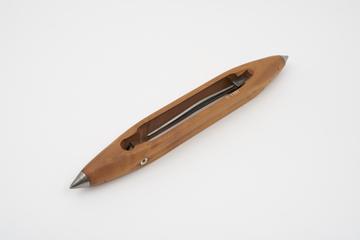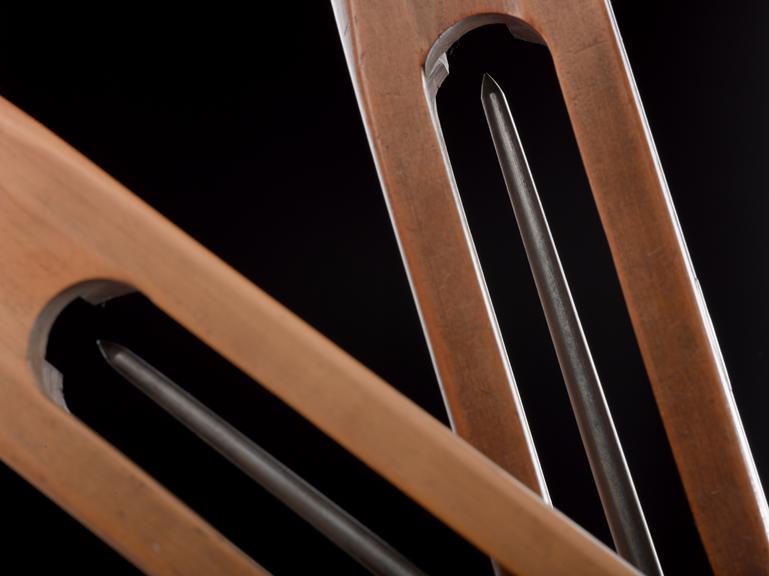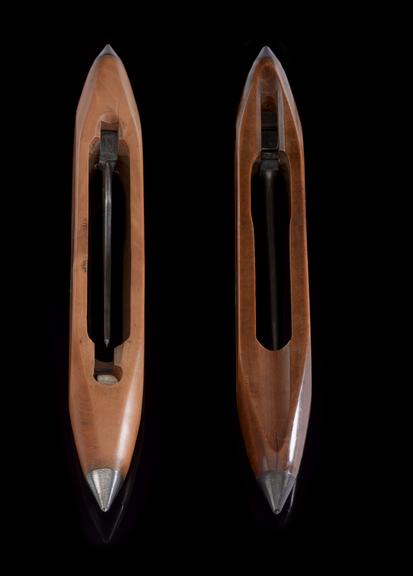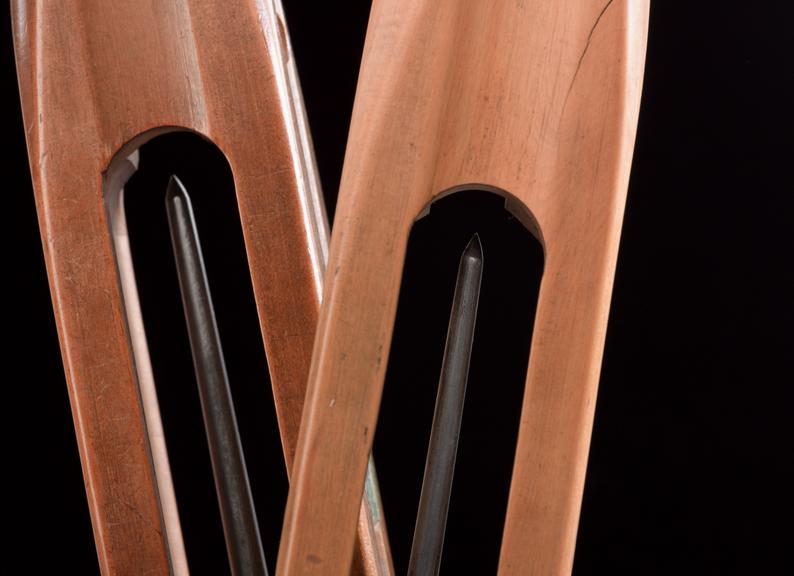
Power loom shuttle, 1858-1862
1858-1862






Five power loom shuttles, by J. Harrison and Sons, Blackburn, Lancashire, England, 1858-1862. These boxwood shuttles only differ from a hand loom shuttle because they do not have rollers. Plus, the spring tongue is hinged like a pocket-knife, so that it projects out from the mortise when inserting a fresh cop of yarn. This improvement dated from the early 19th century: allowing a cop of greater length to be used.





